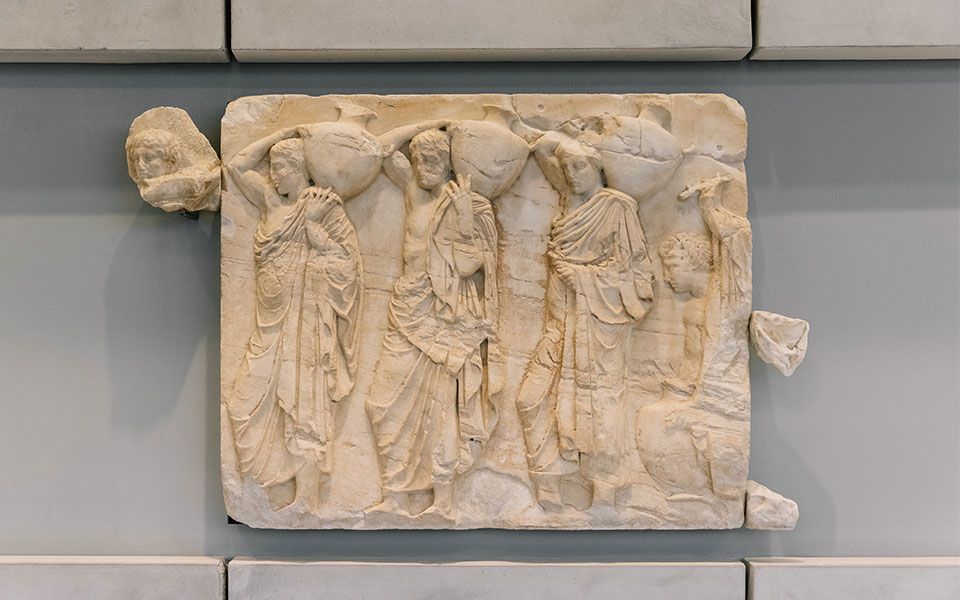In what has been described as a “gesture of friendship,” the Vatican has permanently returned three fragments of the Parthenon’s decorative sculptures to Greece.
During a formal event on the upper floor of the Acropolis Museum on Friday, March 24, in front of a packed crowd of dignitaries, the fragments took their place alongside other sculptures in the purpose-built Parthenon Gallery.
As Museum workers delicately removed the plaster cast replicas and reinstated the originals, the gathered onlookers, including the Orthodox Archbishop of Athens and All Greece, Ieronymos II, the Secretary of the Pontifical Council of Bishops, the Most Reverend Brian Farrell, current Speaker of the Hellenic Parliament, Konstantions Tasoulas, and the Minister of Culture and Sports, Lina Mendoni, burst into applause. Some even shed tears of joy and relief.
Describing the Pope’s actions as “heroic,” Mendoni said: “Initiatives like these show … how the pieces of the Parthenon can be reunited, healing the wounds caused by barbaric hands so many years ago.”
In his address, Bishop Farrell said: “The fragments, representing three different elements of the decoration of the world-famous Athenian Temple, have now returned to their original homeland.”
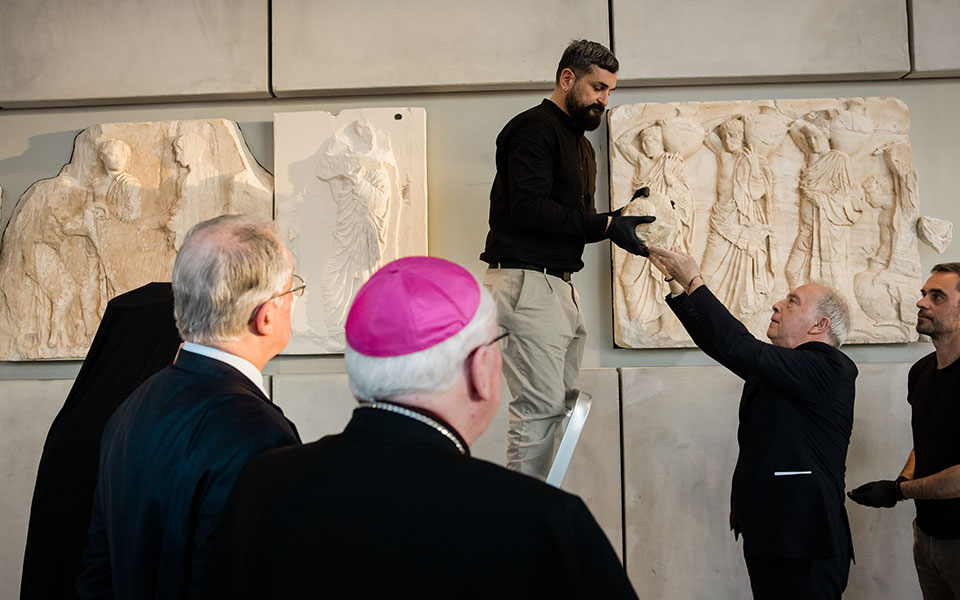
© Acropolis Museum / Paris Tavidian
Following the successful reunification of the Fagan fragment from Sicily in early 2022, Greek officials hope this latest move will prompt others, including the British Museum, which holds around 50 percent of the 2,500-year-old sculptures, to return them.
“The ceremony today… similar to the gesture by the government of Sicily and the Republic of Italy last year, shows the road that we could follow, that everyone could follow, in order for the unity of the Parthenon to be restored,” Mendoni added.
In a statement by the Vatican last December, Pope Francis wanted to donate the pieces to Archbishop Ieronymos “as a concrete sign of the desire to continue the ecumenical journey of bearing witness to the truth.”
“The three fragments from the Parthenon have, for centuries, been carefully kept in the pontifical collections and in the Vatican Museums and exhibited to millions of visitors from all over the world,” the Vatican statement said.
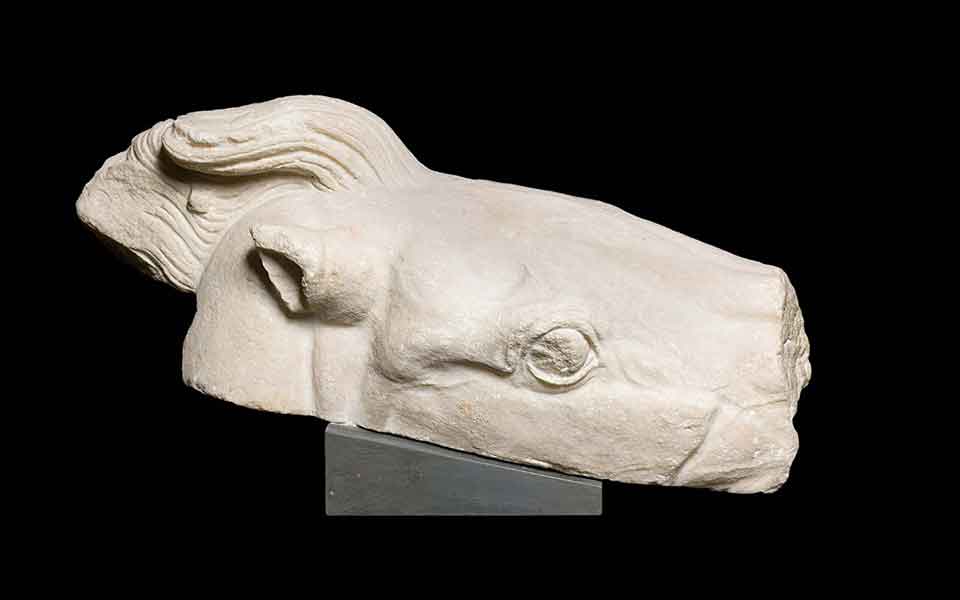
© Acropolis Museum / Governorate of Vatican City State – Directorate of the Museums and Cultural Heritage
Spiritual leader of the Greek Orthodox Church, Archbishop Ieronymos, who holds degrees in archaeology, Byzantine studies and theology from the University of Athens, once served as a research assistant and lector at the Athens Archaeological Society. “This act by Pope Francis is of historical significance and has a positive impact on multiple levels,” the Archbishop told the assembled crowd on Friday. “My personal heartfelt wish is that this initiative is mimicked by others. Pope Francis has proven that this both possible and essential.”
The fragments, including the head of a bearded man, from south metope XVI of the “Centauromachy,” the head of a young boy, from Block V of the north frieze, and a piece of a horse’s head, from one of the Parthenon’s two pediments, came into the possession of the Vatican in the early 19th century.
The Vatican Museums previously loaned the fragment of the boy’s head in late 2008, following a request for its return by the late Greek Orthodox Archbishop Christodoulos at a meeting with Pope Benedict XVI. It was displayed for one year in the Acropolis Museum.
“All the artifacts in the museum belong to the Pope, only he can make a decision about them,” said Giandomenico Spinola, head of the Vatican Museums’ archaeological collections, to Reuters at the time of the loan.
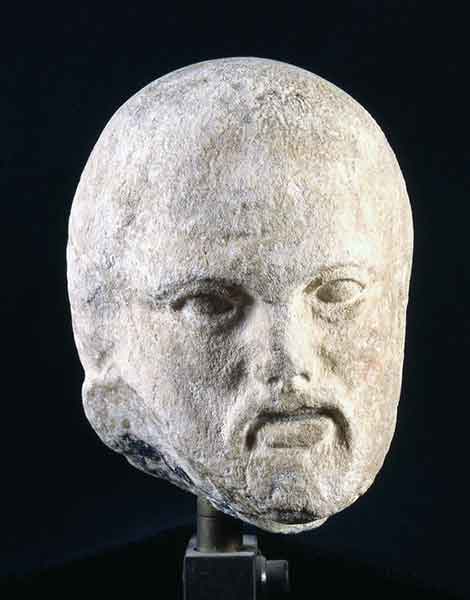
© Acropolis Museum / Governorate of Vatican City State – Directorate of the Museums and Cultural Heritage
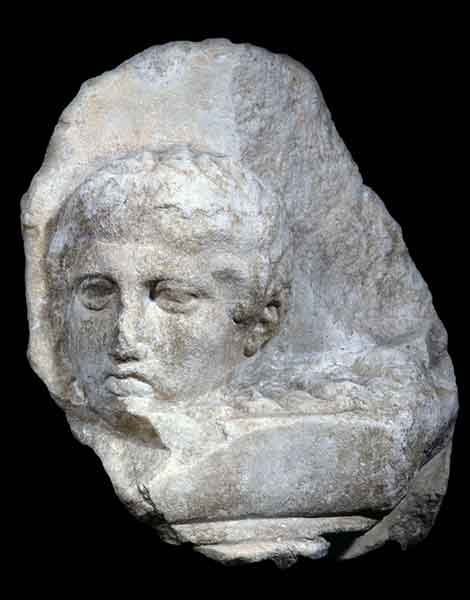
© Acropolis Museum / Governorate of Vatican City State – Directorate of the Museums and Cultural Heritage
In a formal address at Friday’s ceremony, Professor Nikolaos Stampolidis, the Acropolis Museum’s director, said: “the Pope has set a global example.”
“We are doubly grateful, and honoured, that he has chosen to do this not only as the head of the Vatican City but as the head of the Holy Catholic church, representing one billion people throughout the world,” he added, “thus expressing and perpetuating the Ecumenical truth that must be followed for the unity of the Parthenon, the universal symbol of civilization.”
Of the 50 percent of the original sculptures that survive, about half are in the British Museum and half in Athens. Fragments remain in the collections of the Louvre in Paris, the National Archaeological Museum of Denmark in Copenhagen, and in Munich, Vienna, and Würzburg.
In a recent statement, Stampolidis reiterated the point that the unconditional return of parts of the Parthenon’s architectural sculptures by the Government of the Region of Sicily and the Holy See has forged a path that can and must be followed by the British Museum, “following the majority of the British people who wish for the definitive return and reunification of Parthenon sculptures, thus proving Britain’s leading role in matters of morality and culture.”

